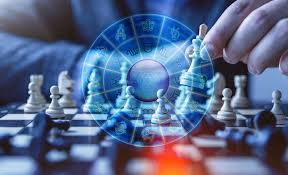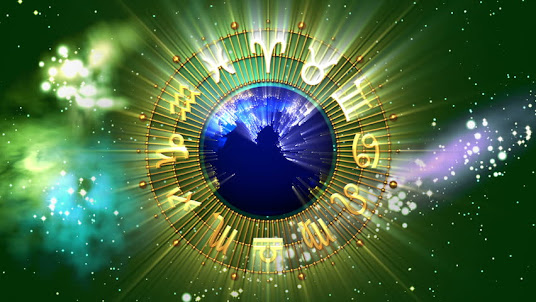Vedic Astrology And Chess - Astrologer Mahima Sharmaa
Is Chess a Divine Game?
There are some apparent connections between's the round of chess and the Astrology which lead us to the decision that Chess is a game enlivened by the Universal Laws, perhaps by the planetary development.
Is Chess one more sort of Astrology?
In Chess, we have a board separated into 8 segments and 8 columns, while in Astrology we utilize the zodiacal circle partitioned into 12 signs.
In Chess, we have 6 images the pieces (King, Queen, Bishop, Knight, Rook, Pawn). In Astrology we have 7 images the 7 customary planets (Sun, Moon, Mars, Mercury, Jupiter, Venus, Saturn).
There are rules for the development of these images and each has a particular worth or understanding.
The Art of the Player of Chess is to completely study and comprehend the organization of impacts and powers on the chessboard, then, at that point, to expand a technique that will lead him/her to the loss of the rival.
The Art of the Astrologer is to completely study and comprehend the organization of impacts in the visionary diagram, then, at that point, to expand a general finish of it.
Up to this point, we appear to have just some basic guidelines that apply to most prepackaged games.
Pieces - Planets connections
Looking further into this, one might see some striking correlations.There are some solid pieces-planets connections.
The King is clearly associated with the Sun. At the point when the King is attacked and caught (checkmate), the game is over.The Queen is related with the Moon in crystal gazing. The Moon moves the speediest of all planets, so does the Queen on the chessboard. In horary and electional (conventional vedic Astrology), the Moon is the main planet to be thought of. The Queen in Chess is as well.
The Pawns resemble youngsters, which are generally controlled by the Moon. At the point when they develop old, that is, the point at which they arrive at the opposite finish of the chessboard, they become Queens. Consequently the Pawns are additionally corresponded with Moon.
The Bishops are clearly associated with Jupiter, since Jupiter controls the religion and the strict people. Nonetheless, as the Bishops move in every case corner to corner and there is the planet Mars whose glyph or image is a circle with a bolt emerging from it a slanted way, therefore the Bishops can likewise be related practically with Mars. Along these lines, the Bishops' tendency is Jupiter/Mars.
The Rooks are additionally called Castles and are subsequently connected with Saturn. However, since they move just evenly or in an upward direction and the ideogram of Venus is as a circle with a cross beneath it, we might say that the Rooks are practically connected with Venus. In this way, the Rooks' tendency is Saturn/Venus.
The Knights are likewise called Horses, and they move abnormally by hopping over different pieces, similar as flying. Hence, the Knights might be related with Mercury, the Roman name of Hermes, the courier god, with winged shoes.
Houses - Game stages connections
The visionary improvement of the round of ChessI'll introduce next the connections between's the twelve celestial places of a Astrology outline and the advancement of a round of chess.
The customary "delights of the planets" are an especially accommodating idea here. It alludes to the house where a planet lives it up, its energy being truly proper and helpful there. The celestial practice thinks about that Mercury has its satisfaction in the first house, the Moon in the third house, Venus in the fifth house, Mars in the sixth house, the Sun in the ninth house, Jupiter in the eleventh house and Saturn in the twelfth house.
The first house is related with the start of the game. The players move the main pieces. At this stage, the Knights are vital as they get around the Pawns and can assault the rival's Pawns. Mercury (the Knights) has its happiness in the first house.
The second house is related with the following phase of the game, the improvement of the pieces, the structure of a construction of guard.
The third house is related with the development of a line of cutting edge Pawns (related with the Moon), conveying and guarding each other. At this stage the Pawns are truly significant. The Moon has its delight in the third house.
The fourth house is related with the castling. The King is put behind a mass of Pawns, in a protected spot. The initial segment of a normal chess game is finished.
The fifth house is related with thinking about a technique of activity; here the imagination of the player is put to preliminary. The primary issue presently is to fortify one's situation to intrigue the foe. The Rook (Venus) enters the game interestingly, as it escapes the chessboard corner through the castling. Venus has its satisfaction in the fifth house.
The sixth house is related with a phase of arrangements. When the general procedure has been set up in the past stage, it is currently an ideal opportunity to incorporate it, first by clearly guiltless moves. In a similar time, one should be mindful of theorize any terrible move of the adversary, while attempting to fix any flimsy parts in the guard. The Knights (Mars) ought to be utilized to control the diagonals. Mars has its bliss in the sixth house.
The seventh house is related with the assault, with the plain test. It is the principal house into the great beyond and from now into the foreseeable future the game will be played straightforwardly. The genuine conflict starts.
The eighth house is related with traps and entanglements, the most perilous phase of the game, when the assault might fizzle and this would prompt a definitive counterattack. In the event that the assault is fruitful, the adversary's guard line will be broken and a portion of his pieces caught: the eighth house is the turned second house (pieces) from the seventh house (rival).
The ninth house is related with significant stages toward triumph. When the safeguard line of the adversary has been broken, at this stage the King (Sun) might be compromised with a money order. The Sun has its euphoria in the ninth house.
The tenth house is the stage when the player is driving and presently needs to design the subsequent stages to make toward triumph.
The eleventh house is related with the last phase of the game, when the last arrangement is tried. Later the two sides have caught many pieces, the Knights (Jupiter) have now a lot of room to stumble into the chessboard. Jupiter has its satisfaction in the eleventh house.
The twelfth house is related with the finish of the game. The Rooks (Saturn) are supporting from behind the Pawns to progress and change into Queens, which will checkmate the enemy's King and bring triumph. Saturn has its bliss in the twelfth house.
This is a visionary outline of the round of chess.But, Chess is a round of brains, which is represented by the moves of the players. It addresses a psychological fighting between two rival players where the one with a deft brain and solidarity to succeed, wins this clash of brains. It is a table game played by two players.
Overall, it is accepted that chess showed up in India around 5000 B.C. A few intriguing legends flourish this entrancing game. One of the legend expresses that the spouse of King Ravana developed the game 4000-5000 years prior.
There is likewise a reference in the Bhavishya Purana about the game. Mahabharata, the incomparable Indian epic, makes reference to the round of Chaturanga played between the two inverse sides of the Pandavas and the Kauravas.
At the point when horoscope is basically a diagram of sky determined by the principles of stargazing, it shows specific places of the planets and zodiacal signs according to the earth. Indian Astrology is famously alluded to as Vedic crystal gazing. This isn't on the grounds that it is there in the Vedas (Veda implies unique information and truth). There is no notice of Astrology in the Vedas. Be that as it may, it is one of the Vedangas, i.e., appendage or part of Vedas, and traces all the way back to the Vedic time frame. A few of the Poojas and healing measures endorsed in the Indian crystal gazing are according to the Vedic framework. Subsequently, it is called Vedic crystal gazing. Ramayan and Mahabharat are the confirmations of Vedic Astrology.





Comments
Post a Comment